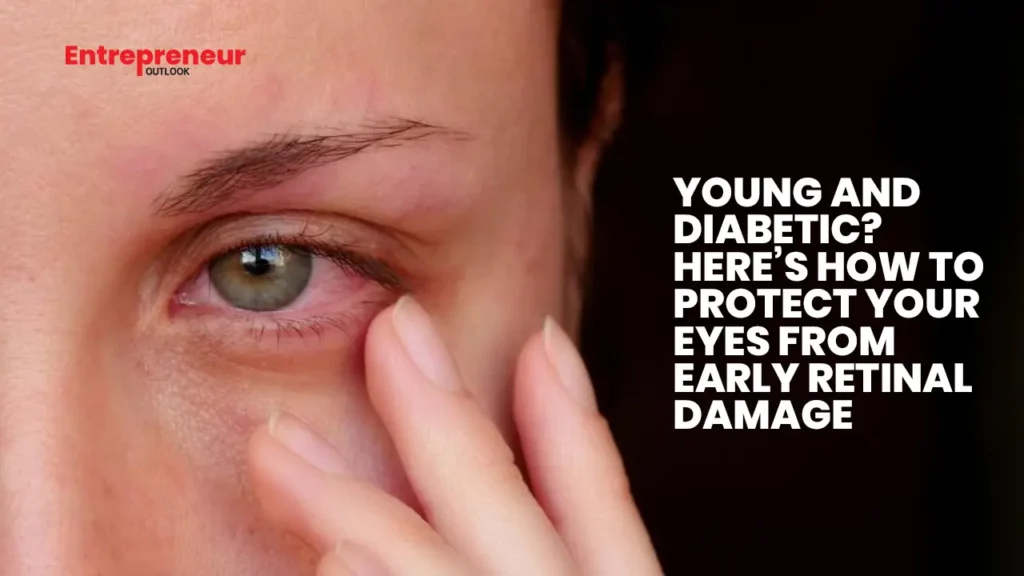How Young Diabetics Can Prevent Early Retinal Damage
Diabetes has rapidly emerged as a major health concern in India — and alarmingly, it’s now affecting younger adults at an unprecedented rate. According to the ICMR–India Diabetes 2024 study, one in every six diabetic adults in India is below the age of 40. Early onset diabetes brings with it a higher lifetime risk of complications, one of the most serious yet often overlooked being damage to the retina, known medically as diabetic retinopathy.
This condition develops when fluctuating blood sugar levels harm the tiny blood vessels of the retina — the light-sensitive tissue at the back of the eye. Over time, this can lead to bleeding, swelling, or the growth of abnormal new vessels. If left unchecked, diabetic retinopathy can quietly progress to permanent vision loss. For young diabetics, this risk is particularly concerning due to the longer duration of disease exposure.
“Save the Retina Today to Preserve Vision for Tomorrow”
Dr. Rohan N. Dedhia, Retina, Cataract, and Refractive Surgeon at Ojas Maxivision Eye Hospitals, explains:
“The retina is one of the most intricate and sensitive parts of the eye — and unfortunately, it’s often the first to be affected by diabetes. Retinopathy progresses silently, with no visible symptoms in its early stages. High blood sugar weakens the vessel walls, leading to irreversible damage. Young diabetics must understand that early retinal changes may remain hidden for years. Regular eye check-ups and strict sugar control are key. If we save the retina today, we secure good vision for tomorrow.”
Why Retinal Damage Happens Early
For the retina to function optimally, it needs a steady supply of oxygen and nutrients. Constantly high glucose levels weaken and clog the small blood vessels that deliver this supply, starving retinal cells of oxygen. As per the All India Ophthalmological Society (AIOS) 2025 report, 12–15% of diabetics under 40 already show early signs of retinopathy.
The problem is often silent — by the time vision blurs or dark spots appear, much of the retinal damage is already irreversible.
Modern lifestyle habits worsen the risk: irregular eating patterns, high consumption of processed foods, prolonged screen exposure, lack of sleep, and chronic stress all increase oxidative stress on the retina. Conditions like hypertension, high cholesterol, and smoking further speed up vessel damage.
Preserving Sight Through Daily Habits
Preventing retinal damage starts with maintaining stable blood sugar levels and following a disciplined lifestyle. Aim to keep HbA1c levels below 7%, take prescribed medications consistently, and avoid sudden sugar spikes.
A balanced diet plays a crucial role. Include:
-
Leafy greens, citrus fruits, and fish for antioxidants and omega-3 fats.
-
Flaxseeds and walnuts for retinal repair.
-
Whole grains and millets instead of refined carbohydrates for better glucose metabolism.
Preventive Monitoring Is Key
Regular physical activity improves blood flow, ensuring the retina receives enough oxygen and nutrients. Staying hydrated and getting 7–8 hours of sleep daily helps minimize vascular stress.
Most importantly, annual retinal screenings should start right after a diabetes diagnosis. Tools like fundus photography or OCT scans can detect minute retinal changes early, enabling timely treatment. Advanced options like laser therapy or anti-VEGF injections can effectively halt disease progression.
A Call for Early Action
For India’s growing young diabetic population, eye care must be integrated into diabetes management from day one. The retina is not just a window to the eye — it’s a reflection of your overall health and long-term sugar control.
Diabetic retinopathy doesn’t strike suddenly; it develops silently over years of neglect. Through awareness, preventive care, and regular eye check-ups, young diabetics can protect not only their vision but also their overall quality of life.
Read Also: Gynaecologist Shares 5 Practical Ways to Relieve Period Cramps Naturally



